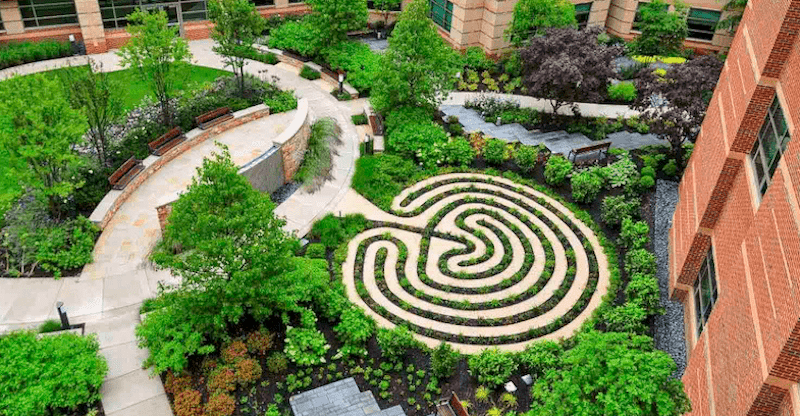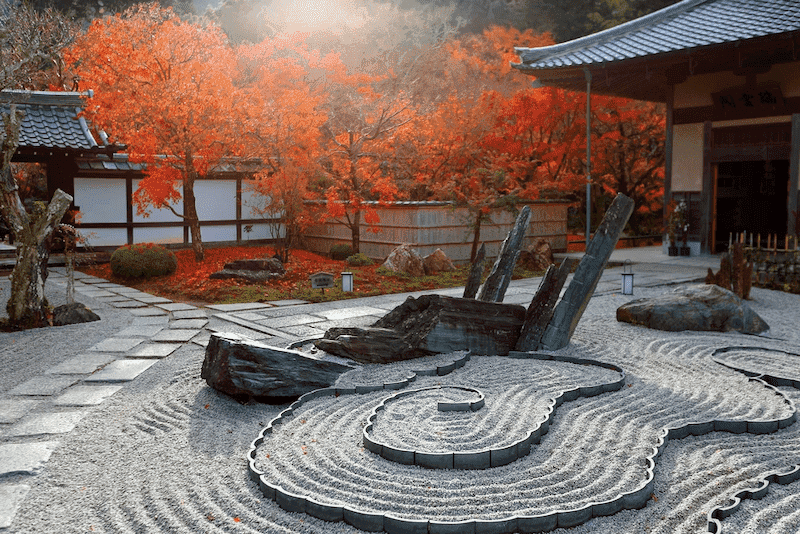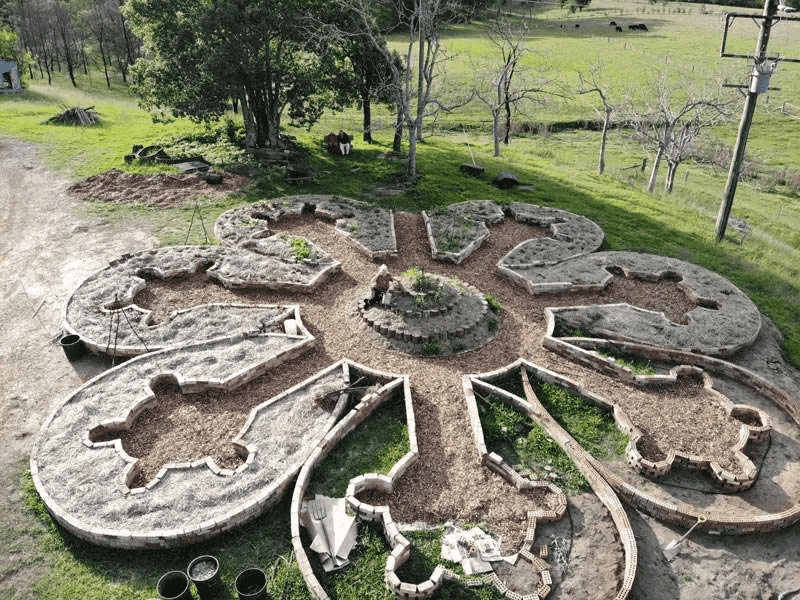Exploring the Benefits of Therapeutic Gardens in Modern Healthcare
The past decade, there has been a growing recognition of the importance of incorporating nature-based therapies into healthcare practices. One such approach that has gained significant attention is the use of therapeutic gardens. These specially designed green spaces offer a unique and immersive experience, harnessing the healing power of nature to promote physical, mental, and emotional well-being. This article we explore the concept of therapeutic gardens, their history and evolution, and the multitude of benefits they bring to modern healthcare.
Understanding the Concept of Therapeutic Gardens
Therapeutic gardens, also called Peace Gardens, are carefully planned and curated spaces that are designed to promote healing, relaxation, and rejuvenation. These gardens are created with the intention of engaging all the senses, offering a multisensory experience that stimulates the mind, body, and soul. They are often characterized by a harmonious blend of natural elements such as plants, water features, and healing pathways that encourage exploration and reflection.
The History and Evolution of Therapeutic Gardens
The concept of therapeutic gardens can be traced back to ancient civilizations, where gardens were revered for their healing properties. From the Hanging Gardens of Babylon to the vertical gardens of ancient Persia, these spaces were recognized for their ability to provide solace and restore balance. Over time, therapeutic gardens have evolved to incorporate various cultural and design influences, resulting in a diverse array of garden styles across the globe.
The Benefits of Therapeutic Gardens in Healthcare
The benefits of therapeutic gardens in healthcare are far-reaching and have been widely documented. One of the key advantages is the positive impact on mental health. Studies have shown that spending time in these gardens can reduce stress, anxiety, and depression, while improving overall mood and well-being. The serene and tranquil environment of a therapeutic garden helps to create a sense of calm and provides an escape from the bustling hospital environment.
Gardens like these have proven to be beneficial for physical health as well. The presence of green spaces and plants has been linked to lower blood pressure, reduced pain perception, and faster recovery times. Patients who are exposed to these natural environments often experience improved immune function and a strengthened sense of resilience.
The Role of Mindful Walking and Meditation in Therapeutic Gardens
Mindful walking and meditation are integral components of the therapeutic garden experience. These practices encourage individuals to be fully present in the moment, allowing them to focus their attention on the sights, sounds, and sensations of the garden around them. The rhythmic movement of walking combined with the peaceful surroundings of a garden helps to induce a state of relaxation and mindfulness.
Research has shown that mindful walking and meditation in therapeutic gardens can enhance cognitive function, promote mental clarity, and improve concentration. These practices also foster a deeper connection with nature and a sense of interconnectedness, which can be profoundly healing on both an individual and collective level.
The Importance of Harmony, Balance, and Energy Flow in Therapeutic Gardens
Central to the design philosophy of therapeutic gardens is the concept of harmony, balance, and energy flow. These gardens are meticulously designed to create a sense of equilibrium and coherence. The placement of plants, pathways, and water features is carefully considered to ensure a harmonious flow and a balanced distribution of energy.
The principles of feng shui, a Chinese practice that emphasizes the harmonious arrangement of physical spaces, often are found included in the design of therapeutic gardens. By adhering to these principles, therapeutic gardens aim to create a space that is in harmony with nature, promoting a sense of peace and well-being.
Aromatherapy and Healing with Plants in Therapeutic Gardens
Aromatherapy is another integral aspect of therapeutic gardens. The scents of various plants and flowers can have a profound impact on our emotions and well-being. Certain fragrances like lavender or jasmine, have been found to promote relaxation and reduce anxiety, while others, like citrus or peppermint, can invigorate and energize.
In therapeutic gardens, carefully selected plants and flowers are incorporated to create a sensory experience that engages both the olfactory system and the mind. The aromas released by these plants can have a therapeutic effect on patients, helping to alleviate stress, improve mood, and enhance overall well-being, particularly with recovering addicts.
Exploring Different Types of Therapeutic Gardens
Therapeutic gardens come in various styles and designs, each with its own unique qualities and cultural influences. Here are a few notable examples:
Feng Shui Gardens
Feng Shui gardens follow the principles of ancient Chinese philosophy, which emphasize the harmonious arrangement of elements to create a balanced and auspicious space. These gardens often feature flowing water, gentle curves, and strategically placed plants to promote positive energy flow and balance.
Japanese Zen Gardens
Japanese Zen gardens are renowned for their simplicity, tranquility, and meditative qualities. These gardens often incorporate elements such as raked gravel, moss, and carefully placed rocks to create a serene and contemplative atmosphere. The design fosters a sense of peace, mindfulness, and connection with nature.
Chinese Spirit Gardens
Chinese spirit gardens are intricately designed spaces that blend nature, art, and spirituality. They are characterized by their symbolic features, such as pavilions, bridges, and pagodas, which represent profound philosophical concepts. These gardens are intended to evoke a sense of transcendence and enlightenment.
European Maze Designs
Maze gardens, popular in Europe, offer a unique and interactive experience. These gardens feature intricate pathways that lead visitors through a maze-like structure, stimulating both the mind and body. Navigating through the maze can be a meditative process, promoting focus and problem-solving skills.
Egyptian Plant Labyrinths
Egyptian plant labyrinths are ancient structures that combine spirituality and horticulture. These gardens feature complex geometric patterns and winding pathways that symbolize the journey of life and death. The design encourages contemplation and self-reflection, allowing individuals to connect with their inner selves.
Sacred Geometry Gardens
Sacred geometry gardens are inspired by the mathematical principles that govern the universe. These gardens incorporate intricate geometric patterns and shapes, creating a visually stunning and harmonious environment. The design aims to elicit a sense of awe, wonder, and a deeper understanding of the interconnectedness of all things.
Unique Features of Therapeutic Gardens
Therapeutic gardens often incorporate unique features that further enhance their healing qualities. Here are a few notable elements commonly found in these gardens:
Agricultural Motifs
Some therapeutic gardens incorporate agricultural motifs, such as vegetable patches or fruit trees. These elements not only provide a source of fresh produce but also offer opportunities for patients to engage in horticultural activities. Agricultural motifs have been shown to have therapeutic benefits, promoting physical activity, cognitive stimulation, and a sense of purpose.
Mandala Designs
Mandala designs, with their intricate patterns and symmetrical arrangements, are often incorporated into therapeutic gardens. These designs symbolize wholeness, balance, and unity, and are believed to promote a sense of harmony and tranquility. Walking or meditating within a mandala garden can evoke a profound sense of peace and centeredness.
Scholar Gardens
Scholar gardens, inspired by traditional Chinese gardens, are designed to stimulate intellectual pursuits and foster contemplation. These gardens often feature quiet pavilions, poetic inscriptions, and scholarly artifacts to create an atmosphere conducive to learning, reflection, and creative inspiration.
Yin and Yang Balance
The concept of yin and yang, representing the balance of opposing forces, is often incorporated into therapeutic gardens. These gardens strive to create a harmonious interplay between elements such as light and shadow, stillness and movement, and softness and hardness. The balanced integration of these contrasting qualities promotes a sense of equilibrium and well-being.
The Five Elements (Wood, Fire, Earth, Metal, Water)
Therapeutic gardens often incorporate the five elements of wood, fire, earth, metal, and water, as recognized in various cultural traditions. Each element represents different aspects of nature and is believed to have unique healing properties. By incorporating these elements into the garden design, a holistic and harmonious environment is created.
The Role of Horticultural Therapy in Therapeutic Gardens
Horticultural therapy is an essential component of therapeutic gardens. This practice involves engaging individuals in horticultural activities, such as planting, cultivating, and harvesting, to promote physical, mental, and emotional well-being. Horticultural therapy has been shown to improve motor skills, cognitive function, and social interaction, making it an effective therapeutic modality in healthcare settings. By actively participating in gardening activities, patients can experience a sense of accomplishment, purpose, and connection with nature. The act of nurturing plants and witnessing their growth can be profoundly healing and empowering, instilling a sense of hope and resilience.
Therapeutic Gardens in Modern Healthcare
By providing a sanctuary in nature, these therapeutic gardens create a conducive environment for healing, relaxation, and rejuvenation. From promoting mental well-being to facilitating physical recovery, therapeutic gardens have the potential to revolutionize modern healthcare practices. As the demand for holistic and nature-based therapies continues to grow, the integration of therapeutic gardens into healthcare settings becomes increasingly important. By embracing the healing power of nature and incorporating these gardens into the design of healthcare facilities, we can create spaces that foster well-being, inspire hope, and enhance the overall quality of care.






.png)
.png)
.png)

.png)